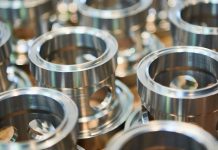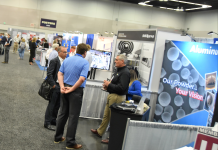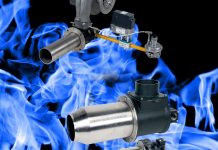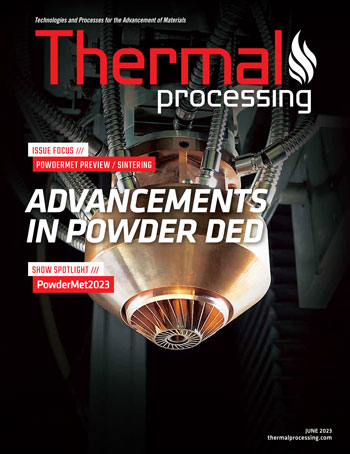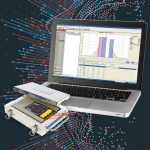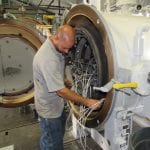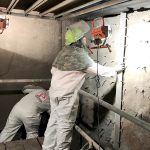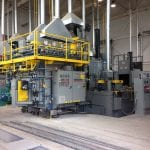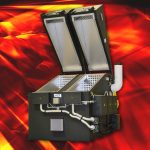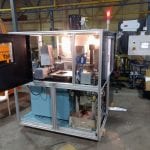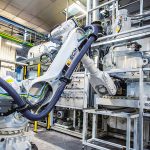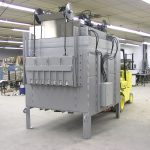Powder metallurgy can be an important part of the thermal-processing world, so it’s important that companies who offer this process, as well as companies who need it, can come together in one place to share and discover the latest innovations the powder metallurgy world has to offer.
For years, now, the Metal Powders Industries Federation (MPIF) has sponsored PowderMet, the leading technical conference on powder metallurgy and particulate materials in the America.
PowderMet2023 is a hub for technology transfer for professionals from every part of the industry, including buyers and specifiers of metal powders, tooling and compacting presses, sintering furnaces, furnace belts, powder handling and blending equipment, quality-control and automation equipment, particle-size and powder-characterization equipment, consulting and research services, and much more.
This year’s trade show is in the heart of Las Vegas, Nevada, at Caesars Palace.
PowderMet2023 is home to the largest annual exhibit in the Americas showcasing the leading suppliers of powder metallurgy, particulate materials, metal injection molding, and metal additive manufacturing processing equipment, powders, and products. This massive display of PM innovations is a must-see opportunity to review the latest technology.
In addition to PowderMet, the event will be co-located with AMPM2023, additive manufacturing with powder metallurgy.
Along with multiple exhibits, attendees will also have access to more than 200 technical presentations from experts from all over the world on the latest research and development.
The conference will open with welcome remarks from MPIF Executive Director/CEO James P. Adams. MPIF President Rodney Brennen will share the State of the Industry report as well.
PowderMet2023 will offer a variety of networking opportunities along with carefully planned technical programs that will allow attendees to explore the exhibit hall, catch up on the latest R&D, and celebrate industry achievements.
Some of the technical programs that may be of interest to industrial heat treaters include (check the PowderMet2023 app for times):
Preparation of Re-W Powder Feedstocks Using Liquid Precursor Impregnation
Rhenium-tungsten alloys are useful refractory metals due to their high-temperature mechanical strength, high density, and thermal conductivity. To produce a Re-W powder feedstock, pure metal or oxide powder precursors are typically blended or mechanically alloyed. Although this technique can be sufficient for conventional powder metallurgy, it is not suitable for additive manufacturing or other applications that require strict control over powder properties. This work applies a liquid precursor impregnation method to prepare Re-W powder feedstocks without altering the properties of the underlying W powder. The ability to produce various rhenium compositions on both fine 1-5 micron and spherical 15-micron W powders is demonstrated, and the powders are consolidated in a dilatometer to assess how this powder preparation influences densification behavior. The microstructure and compositional homogeneity of the consolidated alloys are investigated as well. Overall, this work evaluates a novel, facile power feedstock preparation method for refractory metal alloys.
Furnace Advancements for the Removal of Lubricant, Curing of Soft Magnetics, and the Continuous Sintering of Binder Jetted Materials
Lubricant removal has been one of the most difficult problems in the sintering of conventional powder metal components; however, following more than 10 years of research, a paradigm shift has been presented to the industry that allows the complete removal of lubricants in compacts that are 92 percent dense and under. This has resulted in significant gains in uniformity and component properties. As the powder metal industry struggles to find new applications and join the movement to electric vehicles, soft magnetics have shown a great deal of promise for the future. Conventional thermal process techniques are not optimized for the manufacturing of these products. This session will investigate a new approach to curing soft magnetics that provides flexibility to the producer, along with significant gains in efficiency. As additive manufacturing, specifically binder jetting, becomes more widely accepted, there is a rising need for continuous de-binding and sintering of these products. Using a minimalist approach to the optimized design of a continuous push furnace has provided an approach that has lower capital cost, less maintenance cost, and better quality. This session will discuss this new approach and how it compares to conventional vacuum processing that is commonly used.
New Integral Sinter-Quench Furnace Design For PM Ferrous Parts
Powder metallurgy sintering furnaces for ferrous parts have been optimized for production of plain and carbon parts. The sinter hardening process has been developed by rapidly cooling parts coming out of the sintering section using a fan and heat exchanger to get the desired cooling rates for modified alloys. However, for conventional sintering and through hardening, two different processes are used. This can be in-house continuous or batch sealed quench furnaces for post-sintering operations. Alternatively, sintered materials are sent to a dedicated heat treater’s plant for carburizing or carbo-nitriding process using integral oil quenching system. Good results have been observed in a metallic muffle continuous-hardening furnaces. It is worth exploring design features of a sintering-cum-hardening furnace using oil quenching. Combining the sintering basic primary process and secondary heat treatment process in a PM plant will have many advantages. A stable sinter quench process will reduce raw material powder cost as compared to a sinter hardening process. This new process will reduce multiple handling of sintered parts. This continuous process will enhance PM reach in meeting industry demands with shorter delivery time and consistent quality.
Operating Economics of Roller Hearth Furnaces Compared to Mesh Belt Furnaces
The workhorse of the press and sinter industry, the mesh belt furnace (MBF) cannot be used for sintering above 1,150°C (~2,100°F) due to low belt life at higher temperatures. One alternative is the roller hearth furnace (RHF) that uses graphite trays for parts transport instead of a belt, compared to the MBF in which parts are either placed directly on the belt or on graphite/ceramic trays over the belt. An earlier investigation of 600mm (~24 inches) furnaces of both types that was previously published showed lower energy consumption to the extent of 20 percent by the RHF, a consequent reduction of the total sintering cost and the added possibility of higher temperature sintering. Furthermore, the RHF design concept allows the construction of wider and longer sintering furnaces for higher throughput and lower unit cost than is possible with the MBF. In this investigation, a similar comparison of operating cost is presented for the RHF and MBF but with a larger width of 900mm (~36 inches), both operating at the same sintering temperature.
Optimizing the Sintering Process of High-Performance Carbides
The demand for carbide tools and components with highest quality, as well as the constantly rising costs for energy and raw materials, make optimization of the sintering process of high-performance carbides indispensable. The coating of the carrier plates with graphite- and ceramic-dispersions plays a decisive role, ensuring separation between component and plate as well as optimized grain growth. Graphit Kropfmühl GmbH (GK), a manufacturer of graphite-containing dispersions, has been providing high-performance results in Europe for this sintering application with its Grap Aqua series. Due to its own mines in Europe, Africa, and Asia, GK has direct access to various raw materials, with the right one being selected depending on process requirements. Customized dispersions, characterized by a low level of impurities and/or already containing various ceramic components, have been targeted to improve the sintering processes and product quality. The range of coating performances in the carbide sintering application is presented, including a case study from GK’s experience in Europe using its graphite-based dispersions.
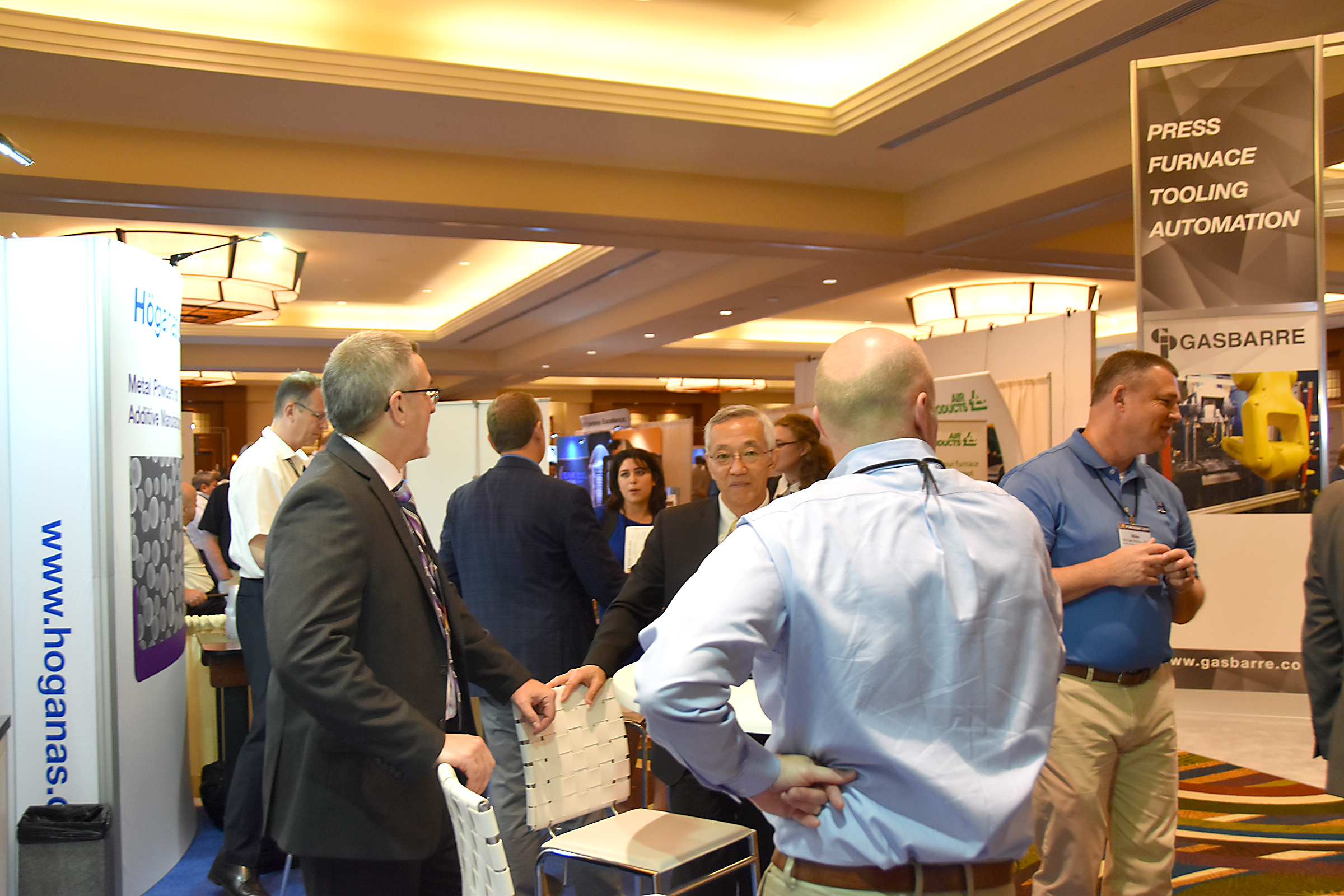
Machining Responses of PM Stainless Steel Components Manufactured under Different Sintering Conditions
Powder metallurgy (PM) stainless steels offer exceptional corrosion resistance but present a very different machinability behavior compared to common carbon and low-alloyed PM steels. Since they contain a high-alloy content with no carbon addition, stainless steels consist of either an austenitic or ferritic microstructure after sintering. Such types of metallurgical matrixes are soft and form long chips during machining. In addition, work-hardening occurs on the machined surface due to the high alloyed matrix. Generally, the stainless steel (SS) components are preferred to be sintered at high temperature in a vacuum or 100 percent reducing atmosphere to achieve high sintered density, prevent oxidation, and limit metallurgical defects. When they are sintered in a nitrogen-containing atmosphere, nitride formation with chromium occurs in the matrix resulting in a different behavior in machining. In this study, the machining response of a PM 316 stainless steel is evaluated after being sintered at conventional and high temperatures in atmospheres containing different percentages of nitrogen. At the same time, methods to improve the machinability are investigated to provide machining solutions for the related stainless steels.
Properties of Green and Sintered FC-0208 Using HGS 2.0
The lubricant in powdered metal plays an important role in the powdered metal process. It allows parts to be ejected from the die during molding, as well as hold the part together before sintering. With the use of better lubricants, time and money can be saved in the powdered metal industry due to the improved properties. Improved green strength and lower ejection forces means less broken green parts as well as the ability to machine green parts, reducing the wear on tooling. With the use of High Green Strength Second Edition (HGS 2.0) lubricant these desired properties could be achieved. A new proprietary lubricant, HGS 2.0, is being tested to determine its properties when used in the powdered metal process. This research is presenting the properties of HGS 2.0 lubricant as well as green and sintered parts of FC-0208 blended with this new lubricant.
Progress in Gas Atomization Reaction Synthesis of Powders for Advanced Consolidation of Oxide Dispersion Strengthened Ferritic Steels
To replace mechanical alloying that needs days of milling and suffers from contamination and inhomogeneity, oxide dispersion strengthened (ODS) ferritic steels, e.g., “14YWT,” were made with powders from gas atomization reaction synthesis (GARS). The Fe-Cr alloys contained Y, W, Ti, and Zr and are atomized with Ar+O2 to produce Cr-enriched surface oxide. TEM analysis of GARS powders revealed that the surface oxide layer characteristics are controlled by oxygen concentration and size-dependent droplet cooling during rapid solidification. During solid state consolidation, trapped powder surfaces become oxygen reservoirs that are released on heating above ~900°C for reaction with Y-containing intermetallic compounds within each particle, forming highly stable oxide dispersoids. In this work, alloy composition and O2 levels were varied to produce desirable precursor powders for consolidation either by solid-state friction/stir shearing with indirect extrusion or by laser-powder bed fusion to enhance oxide dispersion strengthening.
Metal Injection Molded Stainless Steels Exhibiting Exemplary Properties and Very Low Shrinkage Produced Using Homogeneous Multimodal Powder Mixtures
The achievable tolerances of parts made by metal injection molding are determined by sintering shrinkage and uniformity of sintering shrinkage, which are determined largely by powder loading and uniformity of powder loading in the molded green part. The current state-of-the-art somewhat limits the maximum size of metal injection molded parts. Here, multimodal mixtures of high purity spherical 316L and 17-4PH stainless steel powders having high tapped density and high spatial uniformity have been produced using a very high fraction of an atomizer distribution to produce highly loaded feedstock and molded into parts showing sintering shrinkage of about 12 percent. In addition, these high-density powders retain manageable flowability when compounded into MIM feedstock, and can provide 1,000x more contact points hereby facilitating the sintering process. The current work showcases the ability of homogeneous multimodal mixtures to exhibit reduced sintering shrinkage without compromising sintered density or material properties. The performance of these multimodal mixtures has the potential to open metal injection molding to a broader range of potential applications with notable benefits, such as the production of larger parts or more precise smaller parts and the potential reduction or elimination of secondary operations. Furthermore, the powders discussed here use a larger portion of an atomization curve resulting in less material waste and a more efficient supply chain.
Characterization of Phase Transformation in Sinter Hardened Steels
Sinter-hardening is a thermal process in which a ferrous product (material) is sintered and then cooled at a rate sufficient to produce a predominately martensitic microstructure. Density (porosity) and volume (weight) of the components also play a crucial role in martensitic phase formation during sinter-hardening. Understanding the thermal responses of PM materials made at different densities and dimensions is vital to the selection of a suitable sinter-hardening steel with desired mechanical properties.
Previous work characterized the sinter-hardened microstructures of a FL-4608 based material prepared at different density levels with different copper and graphite additions. It has demonstrated that the density has significant effect on the martensite formation when it is above certain density levels. Adjusting the copper and graphite levels can reduce or eliminate the effect of density. In this study, the effect of density and dimensions is further investigated on the phase transformation of material with the same alloying compositions through analysis of thermal responses in the sinter-hardened steels.
Spark Plasma Sintering and Hot Pressing Al-Sc Sputtering Targets
One of the most successful piezoelectric materials in electro-acoustic applications is aluminum scandium nitride thin films produced by reactive sputtering from AlSc alloy targets. The AlScN films are used in the manufacture of the bulk acoustic wave (BAW) filters enabling the current 5G communication revolution. The AlSc alloy system is very challenging for the manufacturing of sputter targets due to the presence of multiple brittle intermetallics and a propensity for segregation. Powder processing can overcome many of these issues. In this study, we utilize powder processing to investigate three alloy compositions with Sc contents of 5at%, 30at% and 50at%, representing a phase structure of Al+Al3Sc, Al3Sc+Al2Sc, and Al2Sc+AlSc. The alloys were gas atomized, followed by conventional hot pressing (HP) or spark plasma sintering (SPS) to provide a high-density target. Characterization of the atomized powders, including morphology, microstructure, and chemistry will be discussed. In addition, microstructure, density, hardness, fracture toughness, and predominant fracture mechanism as a function of process conditions will be compared for the two consolidation methods. Sputtering performance will also be summarized.
Accelerating TTM of High-Performance Metal Parts: From Prototyping to Manufacturing on One AM Platform
When it comes to producing high-performance metal parts of relatively small dimensions, manufacturers today can choose among various traditional and additive manufacturing (AM) technologies. While traditional technologies (e.g., CNC machining, metal injection molding (MIM), and investment casting) provide high quality and competitive costs in large runs, they typically require costly and lengthy product development processes. While varying metal AM technologies (e.g., metal binder jetting (MBJ) and direct metal laser sintering (DMLS)) each has their advantages/disadvantages, most involve powder-based processes that raise safety and other operational challenges. One relatively new metal manufacturing technology – metal material jetting – today delivers an automated production process that enables cost-effective prototyping and manufacturing using the same metal AM system. As a result, the time to market (TTM) of performance parts can be accelerated rapidly. In this presentation, representatives of XJet and Azoth, a metal service bureau, will highlight the experience of a metal service provider in using XJet’s AM system (and underlying material jetting technology) from prototyping to production.










